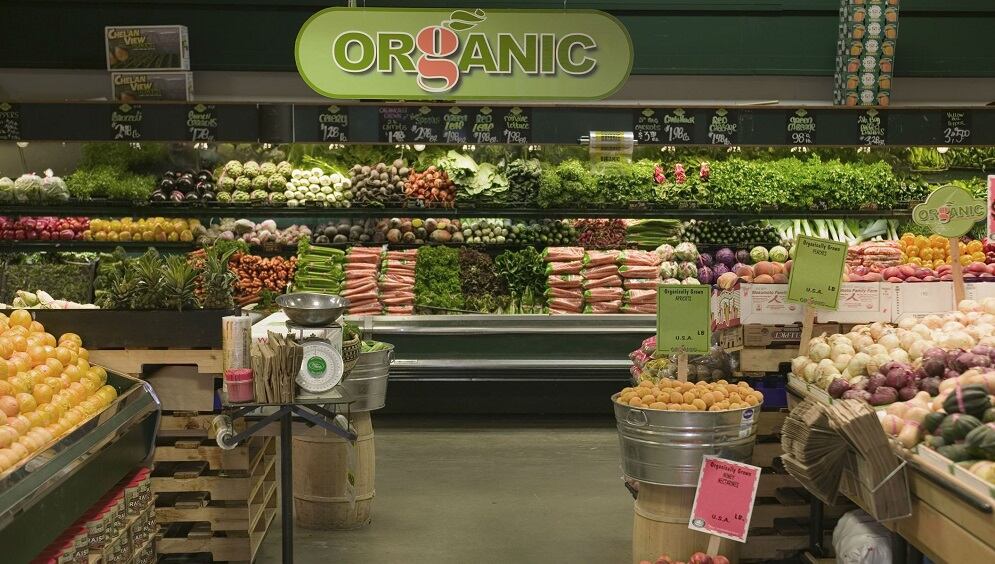Although it is home to 8% of the world's organic farmland, organic food sales in Asia account for just 6% of the global total of US$82bn.
And despite being projected to grow by 10% year-on-year to 2020, organic sales today account for less than 1% of total food sales in across Asia — even in the top three markets of China, South Korea and Japan.
Factoring in the high GDP of countries such as Singapore, Hong Kong and Macau, as well as strong per capita income growth in emerging markets such as Indonesia, China and the Philippines, it is strange that sales are not growing exponentially.
According to Amarjit Sahota, president and founder of Ecovia Intelligence, the main hindrance to the organic industry in Asia is a lack of consumer understanding.
"I believe consumers want organic and will increasingly want organic, but at the minute, I'm not sure they really understand what organic agriculture is, and what it is in relation to claims such as natural and green," he said.
"Only by better educating consumers will we build demand."
Food scandal scares
It is also interesting to note what is driving current organic sales in the region. Unlike North America and Europe, where consumers trust the perceived health benefits of organic food, the Asian market is primarily driven by food safety fears, especially in China.
So in a sense, consumers are not seeing the inherent benefits of organic food but are instead comparing it to products involved in food scandals.
Sahota said: "We don't want people buying organic just because they are scared of conventional products."
Health food hurdles
In addition to problems at the consumer level, suppliers, manufacturers and retailers must overcome certain hurdles if organic food is to establish a strong foothold in Asia.
Joost Hamelink from Tradin Organic said that when it comes to ingredients, the organic market is still relatively immature and subject to considerable supply fluctuations.
This is compounded by the three-year conversion period farmers need to switch from conventional to organic agriculture, and climate change contributing to erratic rainy seasons, which affect subsequent harvest times.
However, Hamelink does see signs of hope, both globally and regionally.
"We are seeing some rapid improvement in organic technology around fertilisers and pest management," he said.
"Investment in farmer field schools is also growing, and we are seeing this pay off as better practices lead to higher yields.
"Meanwhile, the diversification (of ingredient sources) is also helping steady supplies."

While there may be improvements for suppliers, there are still significant challenges for the region's manufacturers.
Apart from a few notable exceptions, a large proportion of organic finished products sold in Asia are manufactured outside of the continent, with firms in the region concerned about ingredient prices and low consumer demand.
But if manufacturers can still make decent returns while producing in Europe's higher wage economies and exporting to Asia, one does wonder why more regional producers don't take the plunge.
One likely reason is the absence of developed retail channels for organic products in Asia.
While European and US manufacturers have access to dedicated organic and natural retailers — or at least, mainstream supermarkets with sufficient shelf space for organic goods — in much of Asia, this is not the case.
Sahota said: "Most of the retail opportunities are in individual, independent stores and that's a big problem for producers. How do they target them all?
"Furthermore, if you go to Indonesia or Vietnam, you will not see organic foods on many supermarket shelves."
Asia's manufacturers and consumers, are also hampered by the vast array of organic accreditation schemes in the region. Not only does this cause consumer confusion, it also undermines the potential for exports due to the time and effort required to fulfil the varying standards.
Indeed, in China alone, there are 26 logos, with countless more across the region.
Not all doom and gloom
The final problem for Asia's manufacturers is that they do not have the option of producing organic own-label products for retailers — because they simply don't exist yet.
Compare this to Europe, where some of the biggest organic brands are own-label, and it is easy to understand why Asia's manufacturers struggle to see the scope for major opportunities.
Despite this, Sahota says it's not all doom and gloom for Asian manufacturers who invest in organic food.
He rightly points out that there are organic supply shortfalls, with demand threatening to outstrip supply, especially in North America.
"That's why exports are going in," he said, adding that "the US has trade agreements with many countries to facilitate this, and there are large and well-established businesses across the supply chain to help with market access."
Hamelink also sees many opportunities for Asian suppliers and manufacturers both regionally and globally, arguing it is only a matter of time before the organic sector scales up.
"The market here is still pretty small, but if European manufacturers can sell to Asia, then there have to be opportunities for local manufacturers too," he said.
Preserve of the rich?
It is often said, rightly or wrongly, that organic food is the preserve of the rich. Sahota disagreed, saying that even if that were true, it would not prohibit organic food from taking off in Asia.
"All too often, people say price is a barrier and many people in Asia can't afford it.
"But even if you believe organic is only a phenomenon for rich countries, seven out of 10 of the richest countries will soon be in Asia, and they will only get richer. This is a false argument and we will see organic continue to grow."
Sahota and Joost were speaking at the Sustainable Foods Summit in Singapore.

